It's best to dehydrate seafood for snacks in a food dehydrator to have better control over drying temperatures. Prepare the seafood as necessary by deboning, gutting, skinning, and removing shells. Spread the seafood on dehydrator trays and dry it at 145°F until leathery, brittle, or easy to flake.
Table of Contents
What is the Best Way to Dry Seafood for Snacks?
Using an electric food dehydrator is the best way to dry seafood for snacks. A dehydrator works best since it allows for steady low temperatures, which are crucial for discouraging bacterial growth when dehydrating seafood.
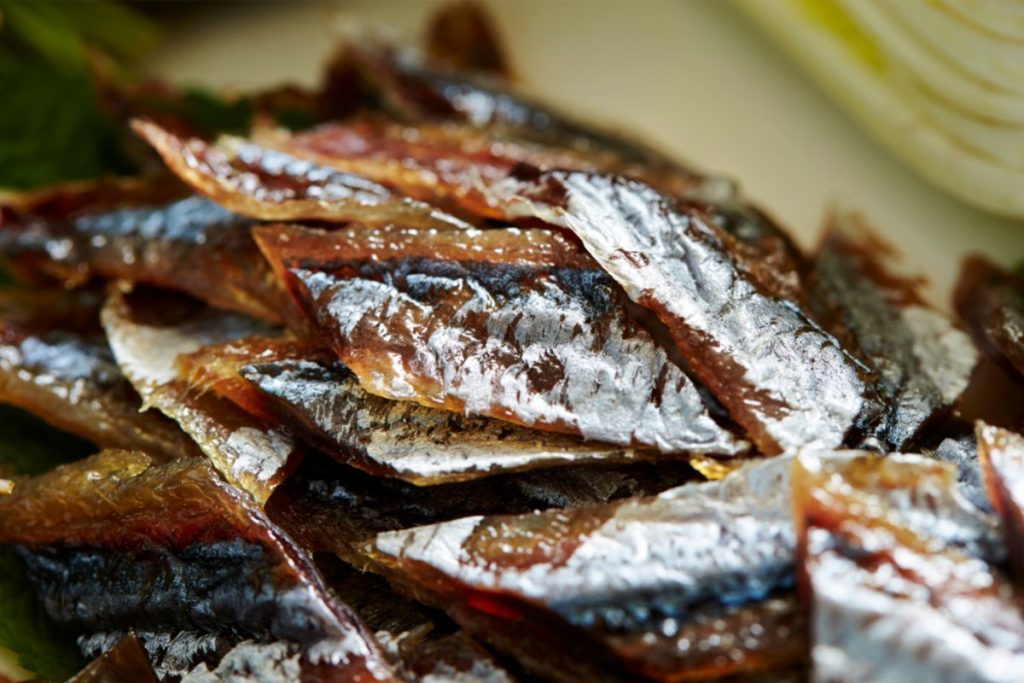
How to Dehydrate Shrimp in a Food Dehydrator
Follow these steps to dehydrate shrimp or other shellfish in your food dehydrator quickly and safely:
- Pick fresh shrimp and rinse the shells under cold running water. Remove the heads, veins, and the legs. Leave the shells on for more flavor, if desired.
- Wash the shrimp under cold running water. Rinse two to three times to ensure high levels of cleanliness.
- Slice the shrimp lengthwise in half (butterfly cut) for faster dehydration.
- Bring 1 quart of water to a steady simmer in a saucepan per 1 pound of shelled shrimp.
- If preferred, make a brine for marinating the shrimp. Remove the hot water from the heat and add two tablespoons of sugar and ¼ cup of kosher salt. Stir to dissolve. Add one bay leaf, half a lemon, and two chopped garlic cloves.
- Refrigerate the brine until it is cold.
- Add the clean shrimp to the chilled brine and soak them in a refrigerator for 4-6 hours.
- Drain the brine and pour the shrimp into a pot and cover them with fresh water. Bring the water to a steady simmer and cook the shrimp for 5 minutes or until just cooked.
- Remove the shrimp from the water and preheat the dehydrator to 145°F.
- Spread the cooked shrimp in a single layer on clean dehydrator trays, ensuring the pieces don’t overlap.
- Dehydrate the shrimp at 145°F for one hour.
- Lower the temperature to 120°F and continue dehydrating the shrimp until they break easily when you bend them. Test for dryness by removing a few pieces, cooling them to room temperature, and bending them. If they snap and have no signs of moisture, they are done.
- Once all the shrimp is dry, remove the trays from the dehydrator and cool the shrimp to room temperature.
- Transfer the cooled shrimp into airtight containers like Mason jars. Add a silica desiccant to absorb any remaining moisture.
- Condition and monitor the shrimp for 3-7 days for evidence of moisture, such as shrimp sticking together or condensation forming inside the jar. If no signs of moisture appear, the shrimp can safely be committed to long-term storage.
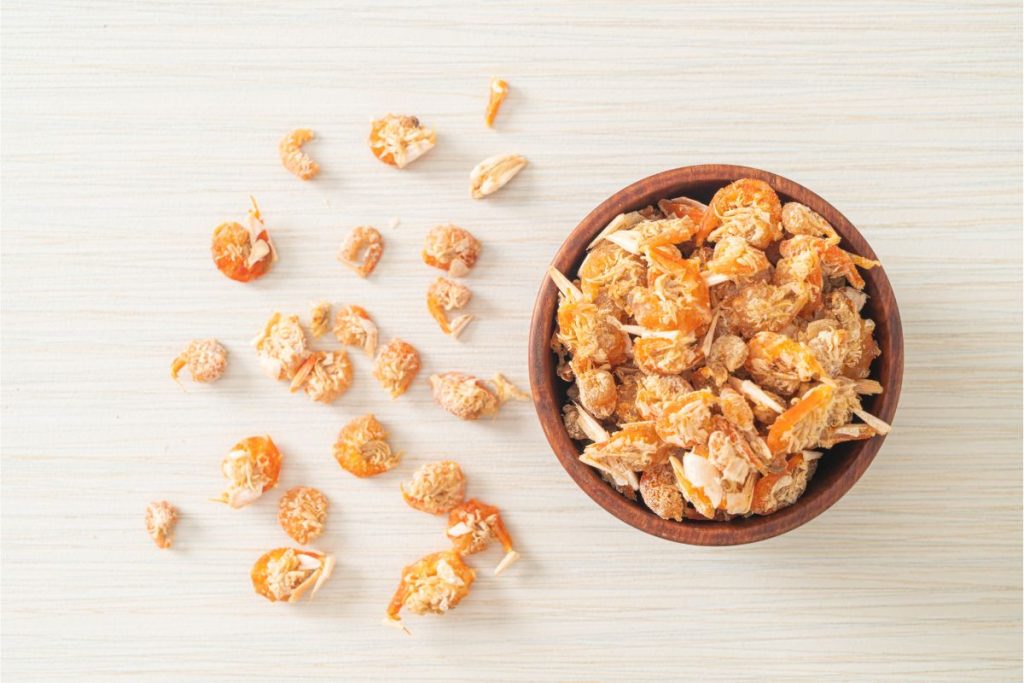
Is it Safe to Dehydrate Seafood?
It’s safe to dehydrate seafood for food preservation purposes. The two main challenges with the process are too much salt and the risk of contamination:
- While too much salt is okay for most people, it may lead to high blood pressure or aggravate it for people who experience hypertension. You can avoid this by marinating seafood in less salt.
- The risk of contamination with bacteria or foreign matter is high when drying seafood. High drying temperatures may encourage bacterial growth during drying. To avoid this, dehydrate fish at lower temperatures.
Can Fish Be Dried in a Food Dehydrator?
Fish requires steady drying temperatures, which are easier to achieve in a food dehydrator than in a conventional oven. A dehydrator is the best for dehydrating fish or making fish jerky.
- Select fresh fish only. Avoid fish with a strong fishy smell, as this indicates spoilage. Frozen fish are unsafe for dehydration. Opt for lean types of fish such as flounder, cod, bass, halibut, or sole. Rinse the fish well under cool running water and pat them dry.
- If it’s freshly caught fish, prepare it by gutting, boning, skinning, and descaling, as necessary.
- Cut the fish into uniform ¼-inch slices or strips and place these in a large, fridge-safe container.
- Make a salt marinade to treat the fish to prevent bacterial growth during dehydration. To make the marinade, add ½-1 teaspoon of sea salt per pound of fish, seasonings of your choice, and enough water to dissolve the salt. If preferred, skip the seasonings for a plain salt marinade.
- Pour the marinade onto the fish and marinate for up to 12 hours in the refrigerator.
- Drain the marinade and discard it. Allow it to drip off each fish fillet completely. Pat the fish dry with paper towels.
- Place the fish in a single layer on clean dehydrator trays and dehydrate them for 10-12 hours at 145°F.
- Monitor the drying process every few hours until the fish dries completely. Dehydrated fish has a leathery feel and will flake easily when you bend the meat.
- Cool the fish to room temperature and store it in airtight containers in a cool, dark, dry place.
- Clean the dehydrator to remove the fishy smell promptly.
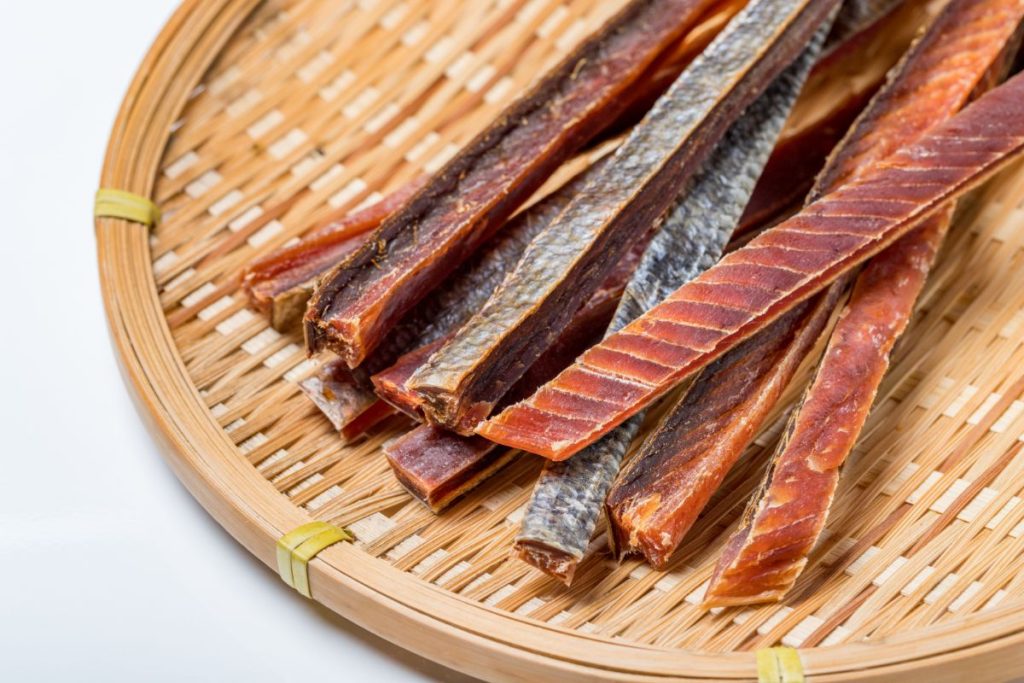
What are the Benefits of Drying Seafood for Snacks?
- Dehydrated fish is a rich source of healthy fats, proteins, and nutrients such as zinc, calcium, copper, iodine, and selenium.
- Dried seafood such as catfish, anchovies, clams, crab, Atlantic mackerel, mullet, haddock, and crawfish are low in mercury.
- Dried shrimp contains astaxanthin, an antioxidant that may promote brain and heart health.
- Fish jerky has up to 1.5 times more protein than beef jerky.
- The Omega-3 fatty acids in seafood can help reduce the risk of heart disease.
- Whitefish jerky contains 30-100 times more Omega-3 fatty acids than beef jerky.
Delicious Snack and Meal Ideas Using Dehydrated Seafood
There’s a whole sea of snack and meal options that can be made with dehydrated seafood, and they can be eaten dried or rehydrated! Here are some delicious seafood snacks to try:
- Canh Chua, is a sweet and sour Vietnamese soup.
- Crab rangoon dumplings made with cream cheese and crabmeat.
- Fry calamari treated with marinara and lemon juice to make a crispy seafood treat.
- Poke, a Hawaiian dish made with chopped veggies, seafood pieces, and seasonings.
- Rocklobster with creamy lemon pesto and zucchini.
- Seafood stir-fry with crispy veggies.
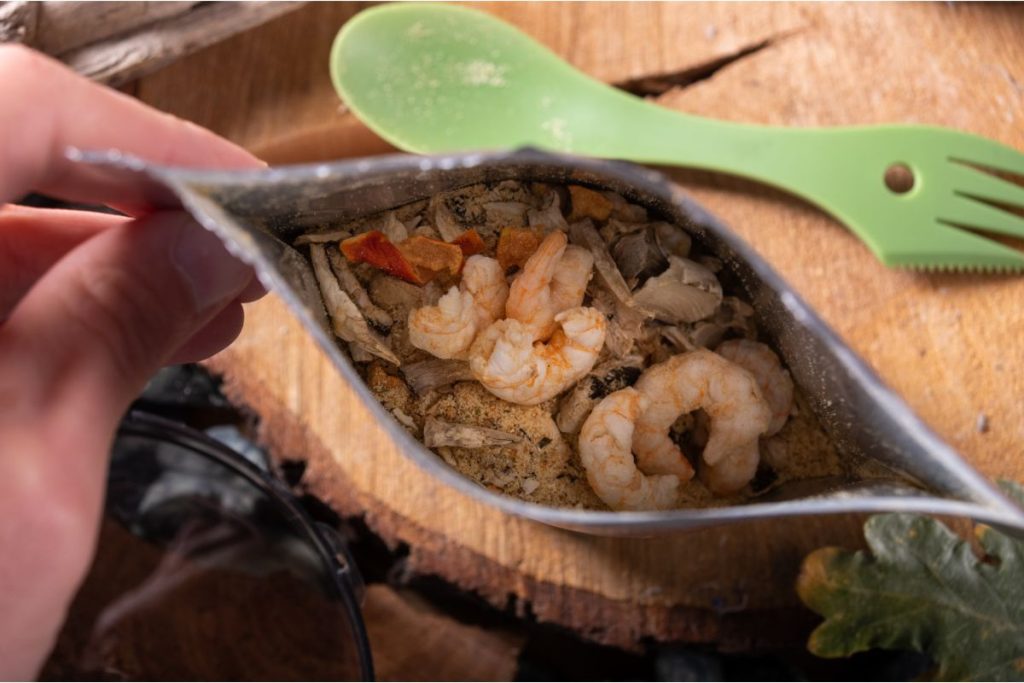
How Do You Dry Fish for Dog Treats?
Drying fish for dog treats follows nearly the same process as dehydrating fish for human consumption, though there are a few small differences required during preparation:
- Debone the fish before drying. Dogs require fish fillets as tiny bones may be dangerous for dogs.
- Reduce the amount of salt when drying fish for dogs. Too much salt is bad for dogs and can lead to severe dehydration.
- Cook the dried fish before you offer it to your dog. Raw fish can transmit bacteria and parasites to dogs.
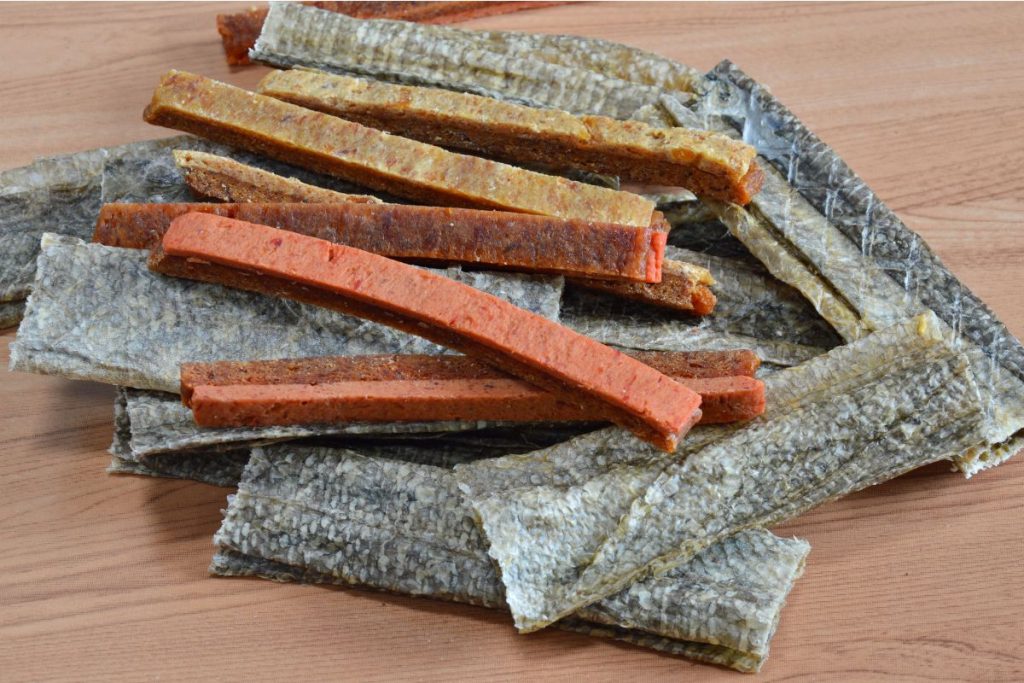
How to Store Dehydrated Seafood Snacks
Dehydrated seafood should be kept in vacuum-sealed containers such as Mason jars, Mylar bags, glass jars, or vacuum seal bags. Label the filled containers by date and contents and store them at room temperature in a cool, dry, dark place. Adding an oxygen scavenger in each storage container will increase the shelf life of the fish.
How Long Does Dehydrated Seafood Last?
Dehydrated seafood has a shelf life of one month at room temperature, six months in the refrigerator, and up to 12 months in the freezer. Properly stored dehydrated fish can last several months or a few years. It’s best to use the fish in 6-12 months.

